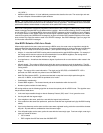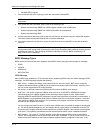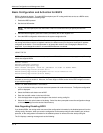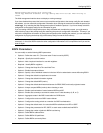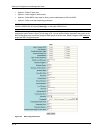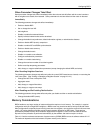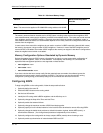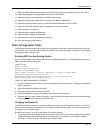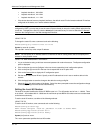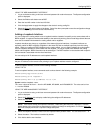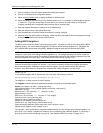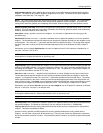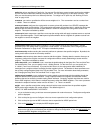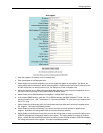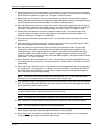
Configuring BGP4
12. Optionally enable automatic summarization of subnets at the classical IP boundaries (classes A, B, and C).
13. Optionally aggregate routes in the BGP4 route table into CIDR blocks.
14. Optionally configure the routing switch as a BGP4 route reflector.
15. Optionally configure the routing switch as a member of a BGP4 confederation.
16. Optionally change the default metric for routes that BGP4 redistributes into RIP or OSPF.
17. Optionally define BGP4 address filters, AS-path filters, or community filters.
18. Optionally define IP prefix lists.
19. Optionally define neighbor distribute lists.
20. Optionally define BGP4 route map entries.
21. Optionally define route flap dampening parameters.
22. Save the changes to flash memory.
Basic Configuration Tasks
The following sections describe how to perform the configuration tasks that are required to use BGP4 on the HP
routing switch. You can modify many parameters in addition to the ones described in this section. See “Optional
Configuration Tasks” on page 10-23.
Enabling BGP4 on the Routing Switch
When you enable BGP4 on the routing switch, BGP4 is automatically activated. To enable BGP4 on the routing
switch, enter the following commands:
USING THE CLI
HP9300> enable
HP9300# configure terminal
HP9300(config)# router bgp
BGP4: Please configure ’local-as’ parameter in order to enable BGP4.
HP9300(config-bgp-router)# local-as 10
HP9300(config-bgp-router)# neighbor 209.157.23.99 remote-as 100
HP9300(config-bgp-router)# write memory
USING THE WEB MANAGEMENT INTERFACE
1. Log on to the device using a valid user name and password for read-write access. The System configuration
panel is displayed.
2. Select the Enable radio button next to BGP.
3. Enter the local AS number in the Local AS field.
4. Click the Apply button to apply the changes to the device’s running-config file.
5. Select the Save
link at the bottom of the dialog. Select Yes when prompted to save the configuration change
to the startup-config file on the device’s flash memory.
Changing the Router ID
The OSPF and BGP4 protocols use router IDs to identify the routers that are running the protocols. A router ID is
a valid, unique IP address and sometimes is an IP address configured on the router. The router ID cannot be an
IP address in use by another device.
By default, the router ID on an HP routing switch is one of the following:
• If the routing switch has loopback interfaces, the default router ID is the IP address configured on the lowest
numbered loopback interface configured on the routing switch. For example, if you configure loopback
interfaces 1, 2, and 3 as follows, the default router ID is 9.9.9.9/24:
10 - 11



